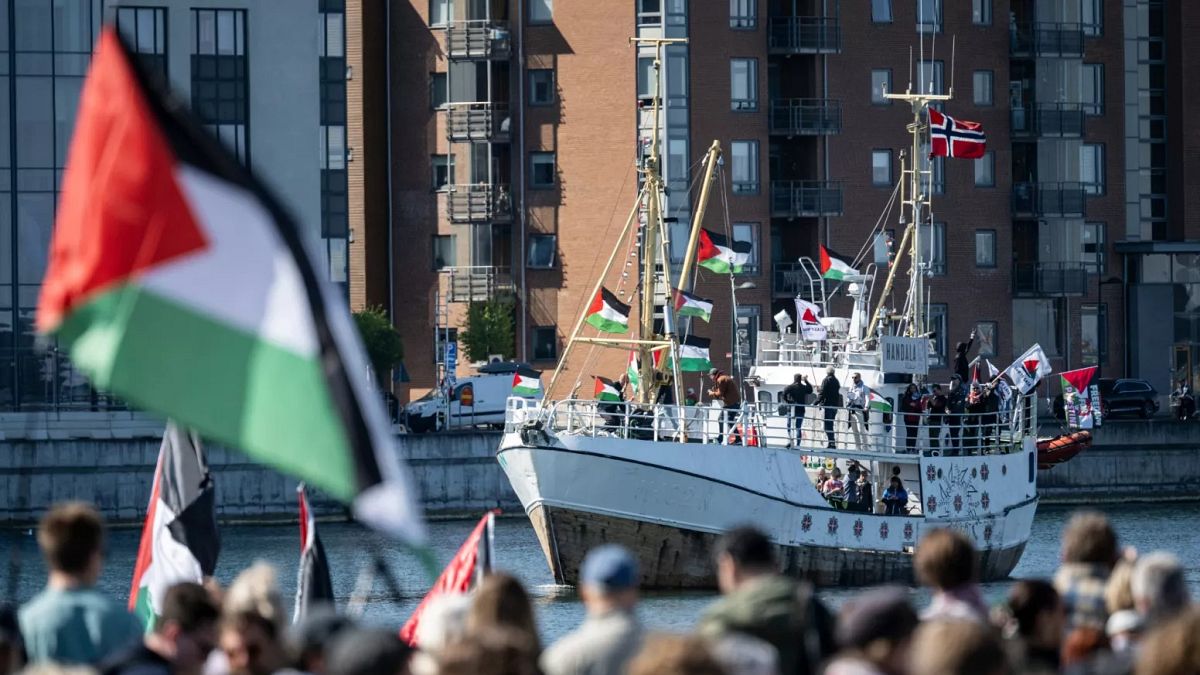

In recent days, the Middle East has witnessed a series of intense developments centered on Gaza, as humanitarian aid efforts and military activities have intersected in complex ways. The situation remains tense, yet there are movements towards addressing both immediate needs and longer-term solutions.
One significant event occurred when the Israeli navy intercepted the Handala, a vessel operated by the Freedom Flotilla Coalition. The flotilla was attempting to deliver much-needed humanitarian aid to Gaza, marking the second such interception in recent months. This incident underscores the ongoing challenges faced by humanitarian missions in the region, as efforts to alleviate suffering compete with security concerns and political complexities.
In tandem with these developments, reports have emerged of at least 25 casualties in Gaza, resulting from Israeli strikes and gunfire. According to staff from the Shifa hospital, many of the victims were civilians waiting for aid near the Zikim crossing. This tragic loss of life highlights the urgent need for solutions that allow for safe delivery of aid and protection of civilians in conflict zones.
Against this backdrop, Israeli Prime Minister Benjamin Netanyahu has indicated that the country is contemplating alternatives to ongoing ceasefire talks with Hamas. The discussions, which have been held in Qatar over several weeks, have shown only incremental progress without major breakthroughs. This contemplation of alternatives suggests a possible shift in strategy, as all sides grapple with finding a sustainable path to peace and stability.
Amidst the escalating humanitarian crisis, Israel has announced a pause in military activity at designated aid sites in Gaza. This “tactical pause” is a response to growing international concern over starvation and the need for essential aid delivery. The Israeli Defense Forces have communicated that military operations will be halted daily in specific areas, including Muwasi, Deir al-Balah, and Gaza City, from 10 a.m. to 8 p.m. local time. This pause is expected to facilitate a greater flow of aid and provide a respite to civilians in the most affected regions.
The cessation of military activities is coupled with a commitment to open new corridors for aid, which aims to address the dire humanitarian situation. Humanitarian organizations and the United Nations have attributed the severe hunger and resultant deaths in Gaza to an almost complete blockade of aid into the territory. The World Food Programme reports that approximately 90,000 women and children are in critical need of nutritional support, with one in three residents experiencing days without food.
This multifaceted response by Israel appears to be an attempt to quell rising international scrutiny and humanitarian alarm. The tactical pauses and aid corridors are a pivotal step in mitigating immediate suffering and addressing the pressing needs of Gaza’s vulnerable populations while balancing security measures.
These developments in Gaza highlight the intricate dynamics of humanitarian needs versus security imperatives in conflict zones. As the international community continues to monitor the situation, stakeholders on all sides are encouraged to seek pathways that prioritize human dignity and well-being, alongside achieving a durable peace.
The unfolding events call for mindful engagement and concerted efforts from regional and global actors to address both immediate humanitarian needs and diplomatic avenues for easing tensions. Continued dialogues and strategic pauses, such as those recently undertaken, hold the potential to create an environment more conducive to lasting peace and stability in the region.
Source: {link}
